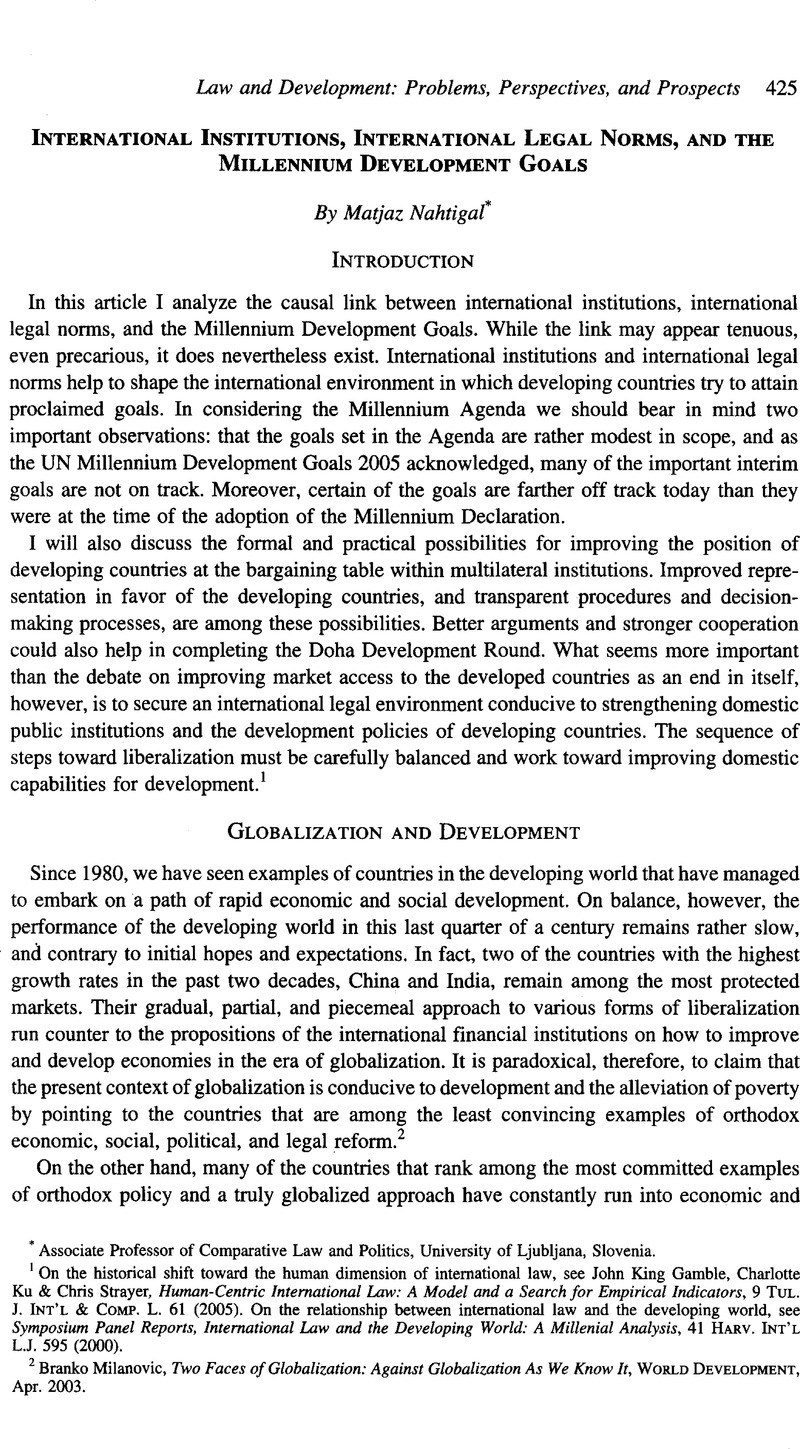No CrossRef data available.
Published online by Cambridge University Press: 28 February 2017

1 On the historical shift toward the human dimension of international law, see Gamble, John King, Ku, Charlotte & Strayer, Chris, Human-Centric International Law: A Model and a Search for Empirical Indicators, 9 Tul. J. Int’l & Comp. L. 61 (2005)Google Scholar. on the relationship between international law and the developing world, see Symposium Panel Reports, International Law and the Developing World: A Millenial Analysis, 41 Harv. Int’l L. J. 595 (2000)Google Scholar.
2 Branko Milanovic, Two Faces of Globalization: Against Globalization As We Know It, World Development, Apr. 2003.
3 William Easterley, The Lost Decades: Developing Countries’ Stagnation in Spite of Policy Reform 1980-1998, World Bank Working Paper, Feb. 2001.
4 Robert H. Wade Is Globalization Reducing Poverty and Inequality?, World Development, Apr. 2004.
5 Anghie, Anthony, Time Present and Time Past: Globalization, International Financial Institutions, and the Third World, 32 N.Y.U. J. Int’l L. & Pol. 243 (2000)Google Scholar.
6 Robert H. Wade What Strategies Are Viable for Developing Countries Today? The World Trade Organization and the Shrinking of “Development Space,” Crisis States Programme, Working Paper No. 31, Working Papers Series No. 1, available at <http://www.eldis.org/static/Doc11821.htm>.
7 Mark Schucksmith Et Al., The Cap and the Regions (2005).
8 Joseph Stiglitz & Andrew Carlton, Fair Trade for All 120 (2005).
9 Id. at 121.
10 Slaughter, Anne-Marie, Security, Solidarity, and Sovereignty: The Grand Themes of UN Reform, 99 AJIL 619 (2005)CrossRefGoogle Scholar.
11 Bearing in mind, however, important caveats provided by David Kennedy in The Dark Sides of Virtue, Princeton University, 2004.